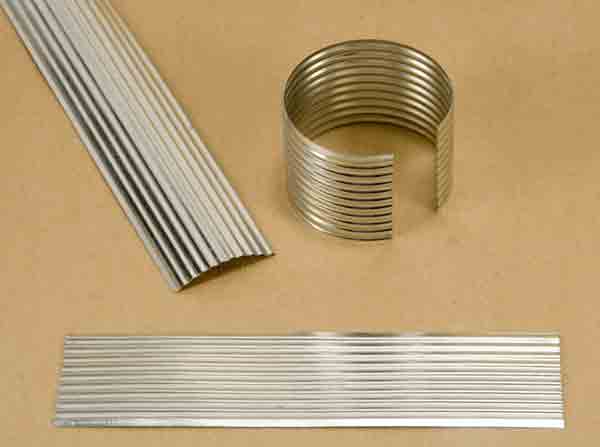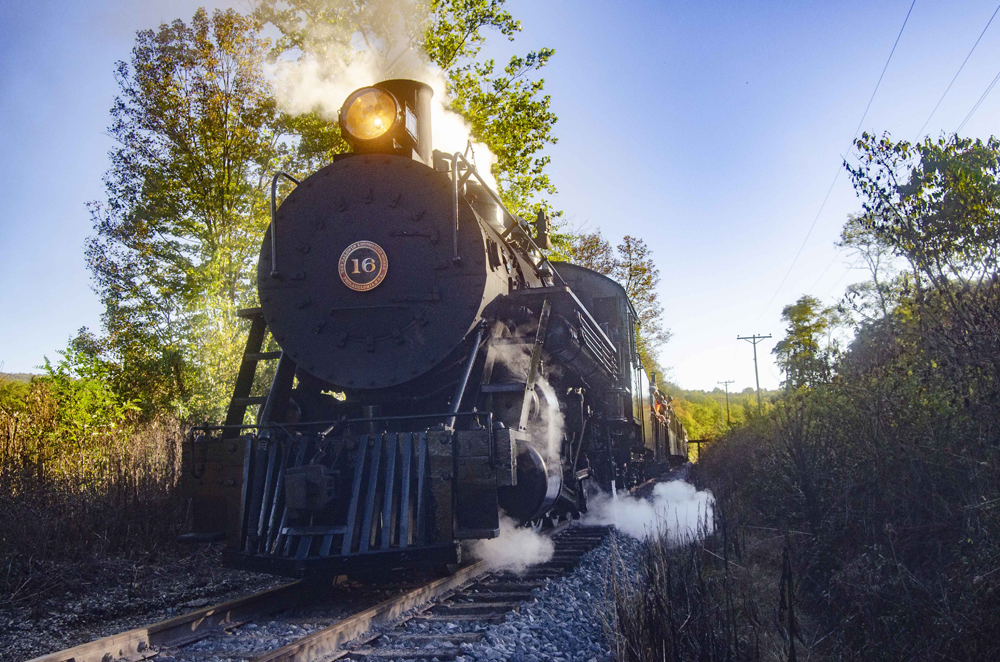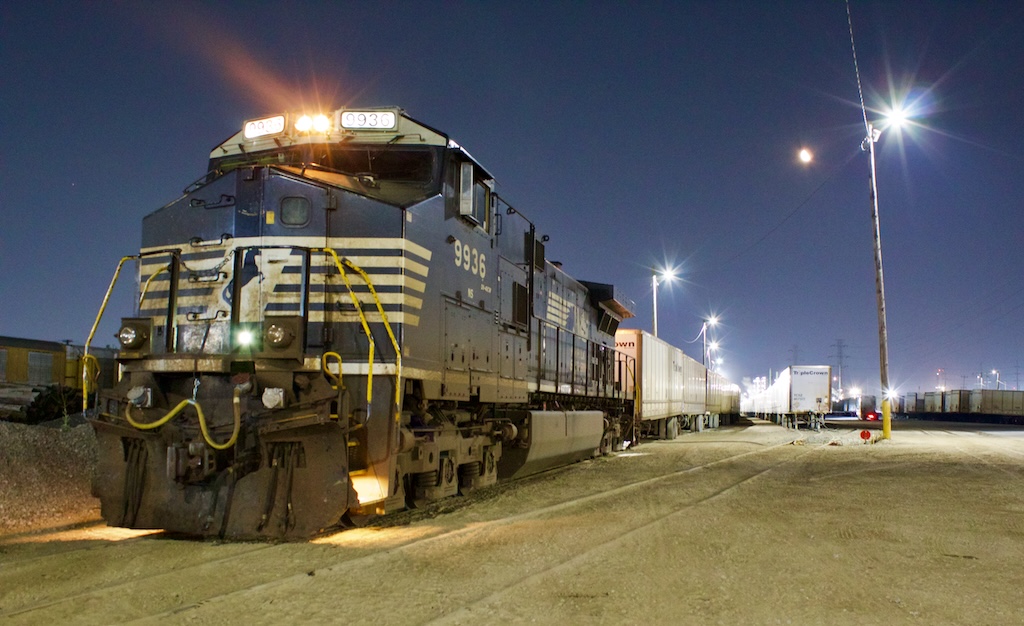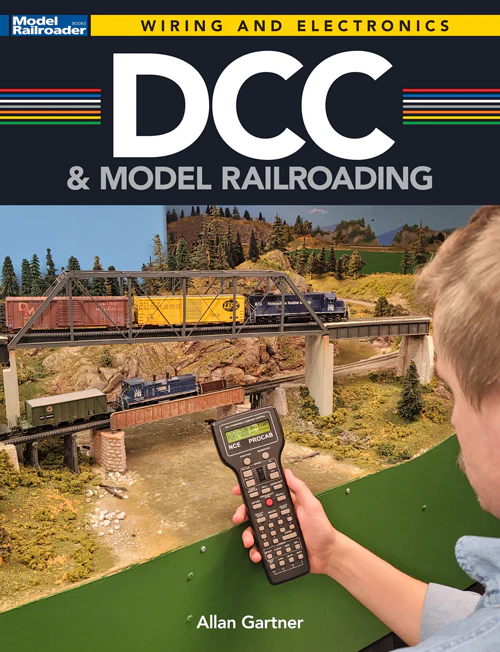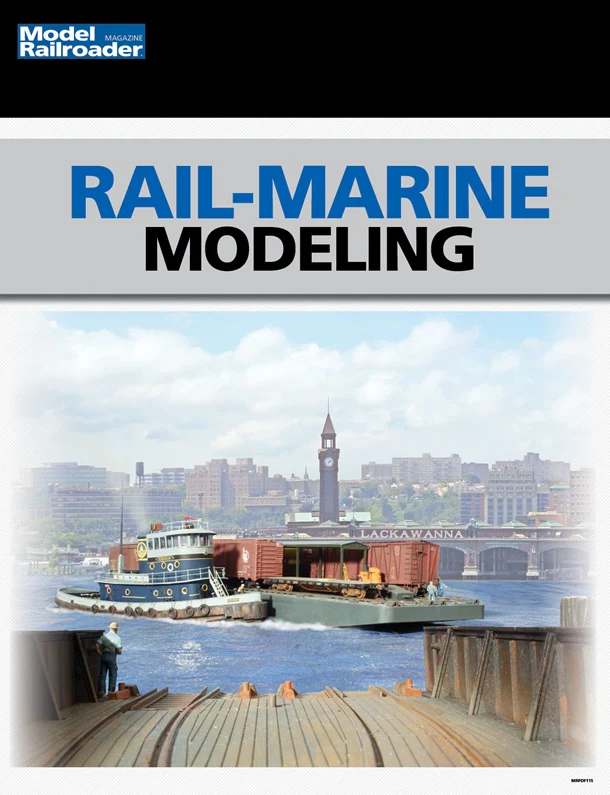G-Scale Corrugated Metal
http://gscalecorrugatedmetal.com
Price: 45¢ per ¼” x 5″ panel + s&h
Corrugated tinplate panels; 11/4″ wide x 5″ long x .006″ thick
Pros: Good corrugated profile; prototypical material; easy to work; can be prototypically weathered
Cons: Actual scale not quoted
G-Scale Corrugated Metal is a new company that has one product—you guessed it—corrugated metal. The company’s website calls the product “G scale” but the actual scale (in numbers) is not stated. However, it is mentioned that the 5″-long corrugated panels were scaled off of a prototypical corrugated sheet from 1900 that was 10′ long, which would put this product in the 1/2″-scale range.
The company’s product is supplied in panels, each 1 1/4″ wide x 5″ long. The material is tinplate, which is actually steel with a thin layer of tin plating on both sides. (The company will also provide copper or aluminum on special request.) This material is relatively soft and easy to work with. Unlike aluminum, it can be easily soldered. It can also be drilled, so can be attached to a wooden frame with pins. The corrugations are evenly spaced and the panels interlock well.
The product is supplied in flat sheets but it can be easily bent, too, especially along the lines of corrugation. A shallow radius can be bent just with the fingers. For a tighter radius, a panel could be pressed around a round object. For grins, I wanted to see if it could be bent perpendicular to the corrugations, using a set of bending rolls. This could be useful in making structures like silos, culverts, and Quonset huts (also developed in Britain). I got out my set of miniature rolls and put a sheet through several times. I was able to get a surprisingly tight bend (and could easily have gotten an even tighter one) without squashing the corrugations.
Cutting these sheets (like any corrugated sheet) is a little problematic. They can be cut with scissors. This leaves a clean cut but it flattens the corrugations at the end, which might be okay for some applications. However, if the corrugations need to be left intact—so that one panel will mate with the next, for instance—a better alternative would be a jeweler’s saw or a Dremel with a cut-off disc in it.
Most full-size corrugated metal today is galvanized, or zinc coated. These panels replicate that with their tin coating. Ancient corrugated metal is often found rusted, sometimes severely so. This product can be rusted but you’ll have to remove the tin coating first. This could be done chemically with various acids, or mechanically with abrasives or wire-brushes. Once the tin is gone, the metal can be rusted with various chemicals (look online for recipes).
This is a good product that should find a wide variety of uses on your railroad, regardless of the era you’re modeling.





